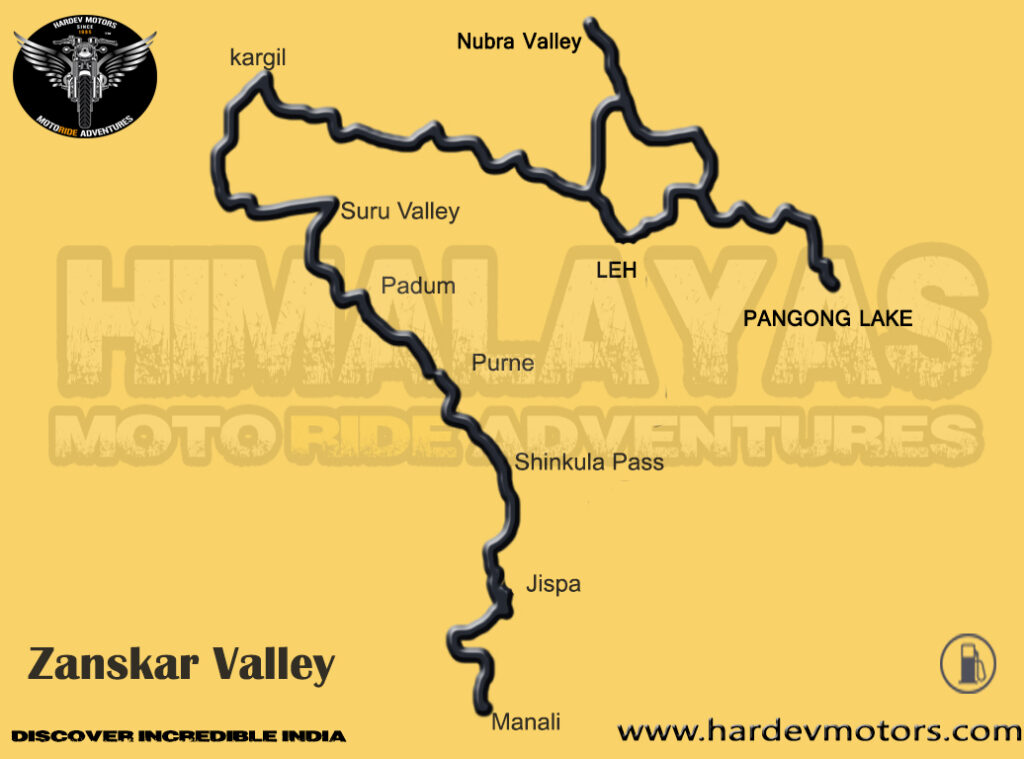The Essence Of Nepal
14N/15D days
Nov, Dec
Availability 15
$2700
Per Person
A complete motorcycle tour that will take you to the most attractive sites of Nepal. Dry majestic mountains, abundant vegetation wildlife, medieval villages, a varied and eventful trip through some of the most scenic valleys of Nepal. Green hills, serene lakes,a spectacular backdrop of snow peaks, anextraordinary fauna and flora,a multitude of palaces and pagodas admirably preserved, the legendary kindness of the people, you’re not dreaming, you really are in Nepal! Meeting place between Buddhism and Hinduism, Nepal conceals a tremendous number of architectural treasures, fabulous landscapes and an ancestral culture. This Kingdom, Buddha’s land of birth, is nestled in the
highest mountains on earth, where stands Mount Everest, also called Sagarmatha by the Nepalese and offers you a great mixture of traditions and religions.
Day 1-Kathmandu
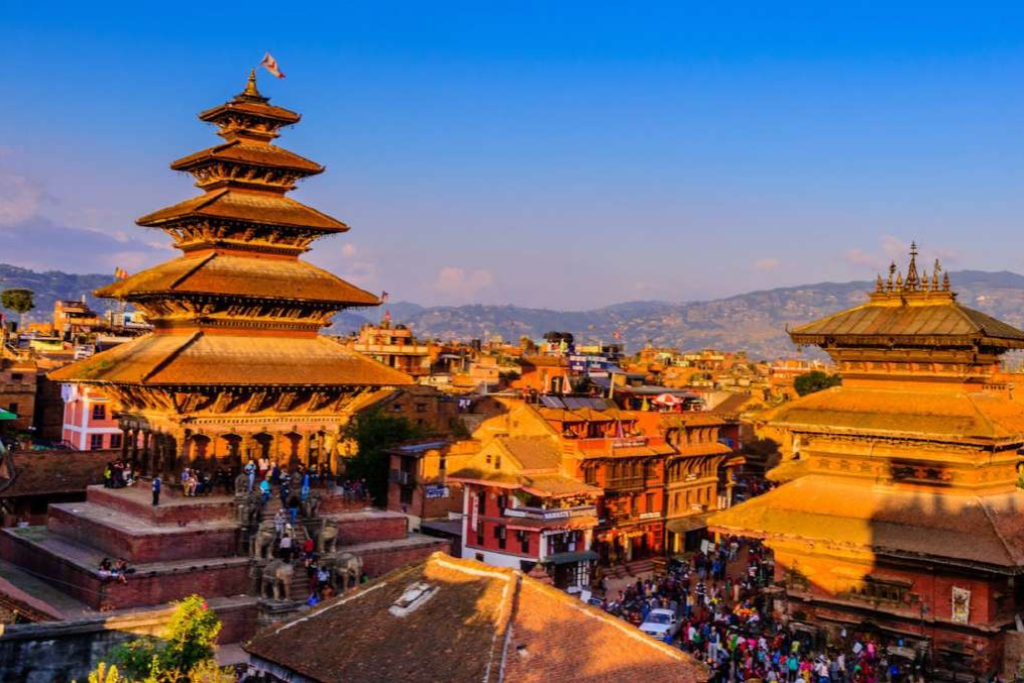
In morning we come to pick you up at the Kathmandu Airport, assist and transfer you to the hotel. Our representatives are there to provide you all the services and soon you’ll be introduced to the bikes and all details about the tour. Go-Pro Cameras on helmets, riding gears, Royal Enfield Bikes, let’s start riding around Kathmandu Valley. With a population of close to 1 million people and an elevation of approximately 1,400 metres (4,600 ft), Kathmandu is the gateway to tourism in Nepal. It is also the hub of the country’s economy and the most advanced infrastructure of any urban area in Nepal.
Day 2-Kathmandu (Local Visit)

In 2013, Kathmandu was ranked third among the top 10 travel destinations on the rise in the world by TripAdvisor, and ranked first in Asia. The city has a rich history, spanning nearly 2000 years. Religious and cultural festivities form a major part of the lives of people residing in Kathmandu. Most of Kathmandu’s people follow Hinduism and many others follow Buddhism. There are people of other religious beliefs as well, giving Kathmandu a cosmopolitan culture. On that day we’ll proceed for the sightseeing tour of the town and its major tourist attractions: Pashupatinath Temple ; the world’s tallest Lord Shiva Statue Kailashnath Mahadev ; Bhaktapur, capital of Nepal until the 15th century and listed as a World Heritage Site by UNESCO for its rich culture, temples, preserved palace courtyards and wood, metal and stone artworks. A tour in the famous neighborhood of Thamel, Kathmandu’s primary “traveler’s ghetto”, is also planned.
Day 3-Kathmandu – Pokhara
In morning we leave the Capital and take the road in direction of the second largest city of Nepal. With a population of 264,991 and an elevation of 1,740 m, the city is located approximately 200 km west of Kathmandu. Three out of the ten highest mountains in the world : Dhaulagiri, Annapurna I and Manaslu are within 30 miles of the city. In recent decades, Pokhara has become a major tourist destination in the world, it is even known as tourism capital of Nepal, in South Asia mainly for adventure tourism and the base for the famous Annapurna Circuit trek. Thus, a major contribution to the local economy comes from the tourism and hospitality industry. There are numerous medieval temples and old newari houses in and around Pokhara valley. Many temples serve as combined places of worship for Hindus and Buddhists.
Day 4 -Pokhara

On the agenda, free sightseeing in and around the city: visit of some temples (Barahi temple, Bindhyabasini, Bhadrakali, etc), a boat tour on the Phewa lake and paragliding over Pokhara for a breathtaking view of the valley and Annapurna range.
Day 5-Pokhara – Tatopani
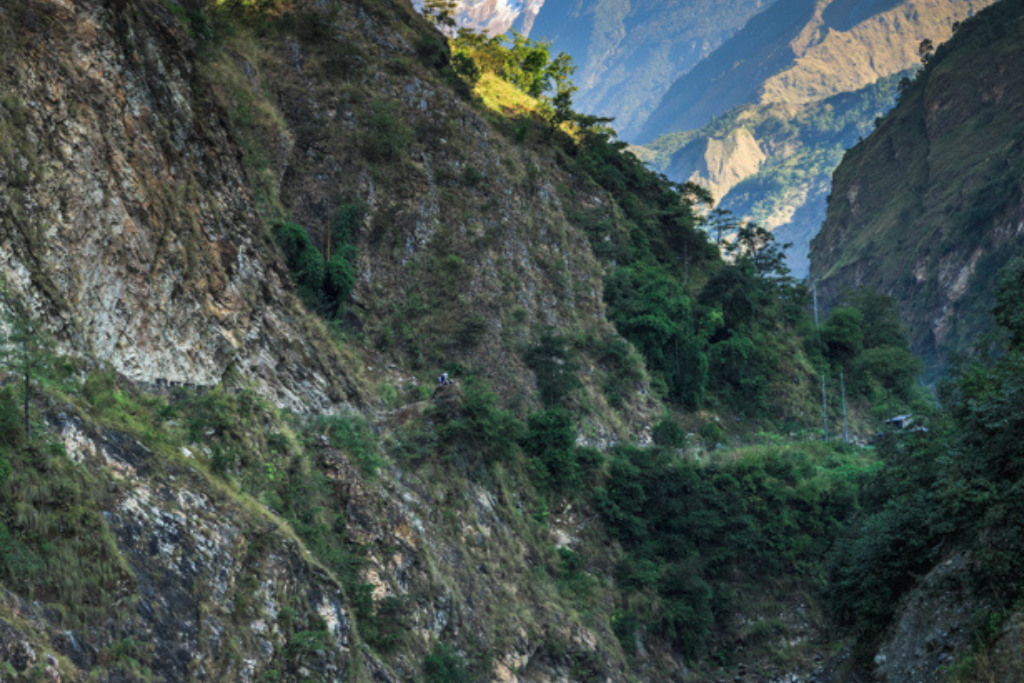
Leaving this idyllic scenery, we start the day in direction of the lush valley of Tatopani, also famous for its hot springs. Besides the beauty of the landscapes, you will not remain indifferent to the charm of the picturesque villages of the area.
Day 6- Tatopani – Marpha – Jomsom

Following the Kali Gandaki river, en route to our next destination. Also known as New Fort, Jomson is located at an altitude of 2800m in Mustang District. Along the banks of the river there are rocks holy to the Hindus. The soaring peaks of Dhaulagiri and Nilgiri form a backdrop. Before reaching Jomsom, we’ll make a stop to Marpha, a calm and pleasant village and apple capital of Nepal.
Day 7- Jomsom – Kagbeni – Muktinath – Tatopani

From Jomson, we are off for Muktinath, 3,710 meters altitude, a sacred place both for Hindus and Buddhists at the foot of the Thorong La mountain pass. Muktinath temple is one of the most ancient Hindu temples of God Vishnu. The Tibetan Buddhist tradition states that Guru Rinpoche, known as Padmasambhava, the founder of Tibetan Buddhism, had meditated at Muktinath on his way to Tibet. This temple is also praised by many saints of Hindu tradition. Indeed you can notice the presence of both culture, Buddhist and Hindu, in that area. On the way, we’ll make a stop at Kagbeni, gateway of upper Mustang. After lunch, back to Tatopani.
Day 8-Tatopani – Pokhara

Free day in Pokhara to enjoy its majestic surroundings and visit its many places of interest or just have a rest near its crystal lake.
Day 9-Pokhara – Lumbini
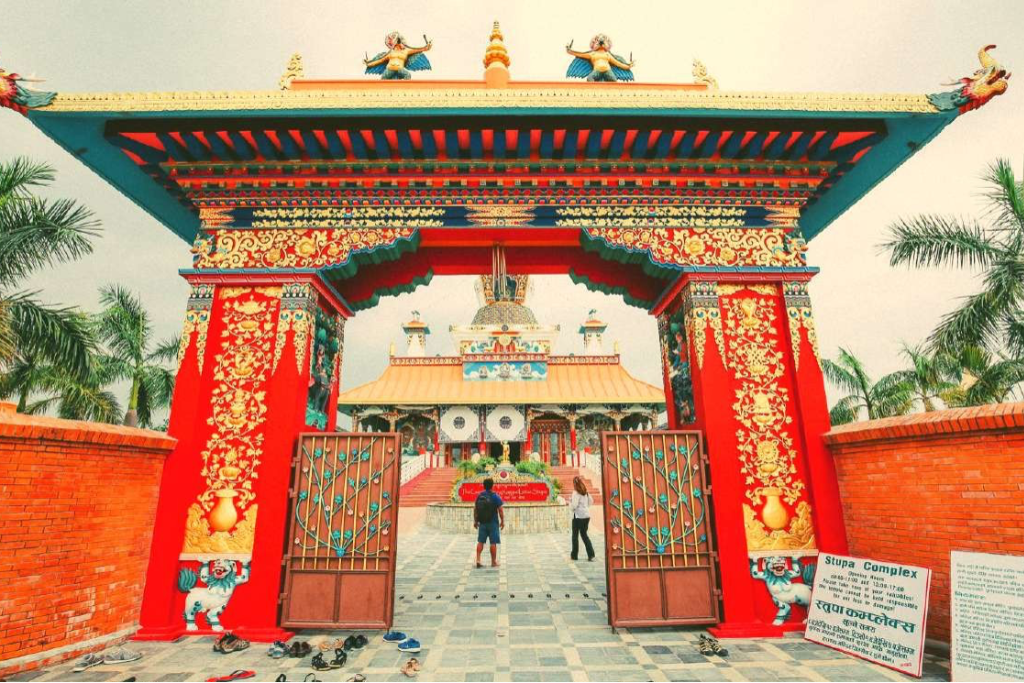
We follow our route in direction of the birthplace of Buddha. According to Buddhist tradition, Queen Mayadevi gave birth to Siddhartha Gautama in 623 BCE. Gautama, who achieved nirvana some time around 543 BCE became the Lord Gautama Buddha and founded Buddhism after achieving Enlightenment. Lumbini became a major Buddhist pilgrimage site. It has a number of temples, including the Mayadevi temple and several others which are still under construction. Many monuments, monasteries and a museum, the Lumbini International Research Institute, are also located within the holy site. Visits of the most touristic attractions.
Day 10-Lumbini – Chitwan
Ride to the first national park in Nepal and most popular tourist destinations of the country. Established in 1973 and covering an area of 932 km2 the park granted the status of a World Heritage Site in 1984. Since the end of the 19th century Chitwan used to be a favorite hunting ground for Nepal’s ruling class. In 1950, Chitwan’s forest and grasslands extended over more than 2,600 km2 and was home to about 800 rhinos. The area was subsequently opened for settlement, and poaching of wildlife became rampant. By the end of the 1960s, 70% of Chitwan’s jungles were cleared using DDT (a powerful insecticide), thousands of people had settled there, and only 95 rhinos remained. The dramatic decline of the rhino population and the extent of poaching prompted the government to institute a rhino reconnaissance patrol and guard posts all over Chitwan. The Chitwan National Park was gazetted in December 1970, with borders established in 1973, initially encompassing an area of 544 km2. In 1977, the park was enlarged of 932 km2 and in 1997 a bufferzone of 766.1 km2 was added to the north and west of the Narayani-Rapti river system, and between the south-eastern boundary of the park and the international border to India.
Day 11-Chitwan (Jungle Safari)

Let’s go for an authentic safari on an elephant through the national park to discover its abundant wildlife closely. A total of 68 species of mammals (wild elephant), 56 species of herpeto fauna and 126 species of fish have been recorded in the park. The park is especially renowned for its protection of One Horned Rhinoceros, Royal Bengal Tiger and Gharial Crocodile. The park harbors not only the world’s largest terrestrial mammal but also the world’s smallest terrestrial mammal (pygmy shrew). A total of 544 species of birds has been recorded so far including 22 globally threatened species.
Day 12-LEH – Chitwan – Katmandu

Back to Kathmandu where our riding days come to the end, full of good memories and fascinating experiences. Here it’s a time to do some shopping for the family and friends, collect all the tour pictures during our farewell party with Hardev Motors Team! We hope that you spent an enjoyable trip with us.
Day 13-katmandu
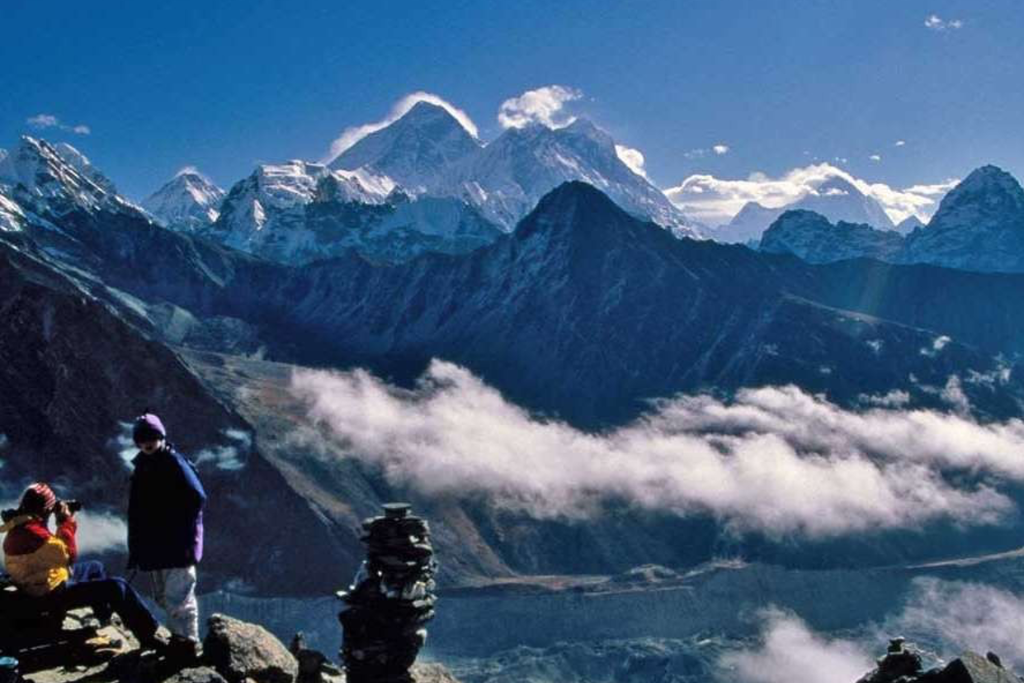
End of the tour. A transfer to the airport will be organized by our team as per your schedule.
